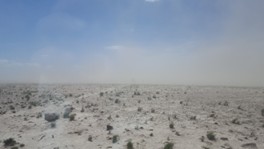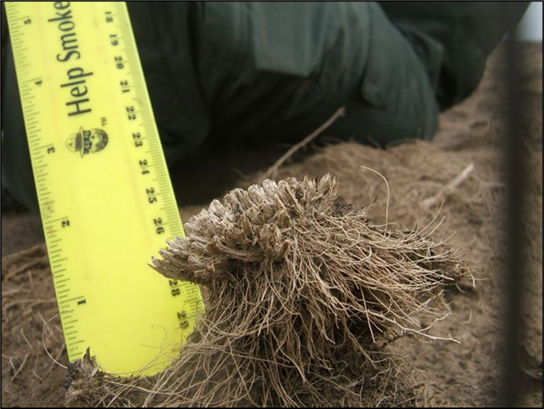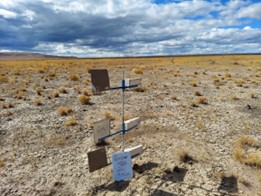Wind and Water Erosion
We are evaluating the relationships between changes in the plant community and ground cover and water runoff and erosion processes. Emphasis is placed on determining if critical thresholds exist in vegetation and ground cover that significantly influence runoff and erosion and how land management treatments may influence such thresholds. This work is focused on the pinyon-juniper zone due to limited understanding of hydrologic processes and the hydrologic effects of tree removal treatments in this cover type. SageSTEP research looks to:
- Identify thresholds for increased runoff and erosion as tree overstory increases and understory plants decrease.
- Measure the impact of prescribed fire on water infiltration capacity, overland flow and soil erodibility as tree overstory increases and understory plants decrease.
- Determine the impact of cross-felled and masticated trees on hillslope surface runoff and rill erosion dynamics.
- Improve our basic understanding of the hydrologic connectivity between areas of a hillslope under tree canopies and in areas between tree canopies.
- Provide data sets to expand applicability of the Erosion Risk Management Tool to cover woodland management scenarios studied in this project.
Wind erosion is prevalent in rangeland ecosystems, yet most research focuses on water erosion. Additionally, our understanding and methods for measuring wind erosion are much less developed than water erosion, especially in a post-wildfire context. Using the Owyhee and Rock Creek and sites, which burned in wildfire during 2018 and 2019, respectively, we had a unique opportunity to:
- Understand how pre-fire fuels management may affect post-wildfire wind erosion.
- Determine how plant and soil characteristics contribute or mitigate wind erosion.
- Compare methods for measuring wind erosion rates.
In the years following wildfire, wind erosion rates can span four orders of magnitude. Understanding the role of plant community development and changes to rates of wind erosion are critical for understanding how restoration can be used to mitigate loss of soils to wind erosion. Tying post-wildfire plant community trajectories to wind erosion can help:
- Identify which plant functional groups are contributing to site stability
- Evaluate management actions that make sites more or less vulnerable to wind erosion in the years following wildfire.
Latest Resources on Erosion
View article. The transition of sagebrush-dominated shrublands to pinyon and juniper woodlands markedly alters resource-conserving vegetation structure typical of these landscapes. Land managers and scientists in the western United States need knowledge and predictive tools for assessment and effective targeting of tree-removal treatments to conserve or restore sagebrush vegetation and associated hydrologic function. This study…
View article. The USDA Water Erosion Prediction Project (WEPP) is a process-based soil erosion prediction model. WEPP uses three soil erodibility parameters: rill erodibility (Kr), interrill erodibility (Ki), and critical hydraulic shear stress (τc). In this study, a new parameterization approach for estimating erodibility was developed for WEPP applications on rangelands. Data from overland flow…
View recorded presentations. The SRM Symposium (February 2021) shared some of what’s been learned after at least 10 years post-treatment. Researchers present findings from conifer-encroached and cheatgrass-invaded sites, focusing on: effects of treatments on herbaceous plants, ground surface properties, and hydrologic and erosion processes in woodlands; and on fire behavior and Wyoming big sagebrush in…






